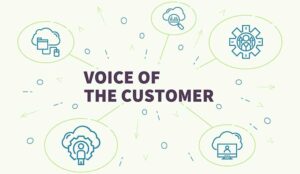In the US, the term “outcomes-based” is typically used in reference to a shift in healthcare that reprioritises payment based on a patient’s complete and successful treatment rather than collecting a fee for every service.
Although this requires taking a longer-term view, the benefits of moving to this model are many: it broadens care treatment programmes and takes a holistic approach to patient care that values long-term wellness.
Also, it gives physicians, nurses, and other healthcare personnel an incentive to prescribe the best course of treatment, regardless of a patient’s financial standing.
When these same principles are applied to how companies care for their customers, it builds trust, and 83 percent of customers say that loyalty is driven by trust. With this approach, businesses can fundamentally improve customer relationships.
According to McKinsey, making this shift in healthcare requires a change in how physicians practise and how patients make decisions and, at the end of the day, they must see a cost benefit. The same can be said for customer engagement.
Brands must fundamentally change their behaviour and engagement strategies and customers must see the benefits of these changes. For companies to move toward outcomes and away from efficiency, they must undergo a complete rewire of both metrics and technology.
A Change in Metrics
Success is typically measured around single engagement metrics such as first call resolution, average call handling time, escalations and customer retention. Breaking down customer engagement silos and shifting to an outcomes-based approach moves away from traditional customer service metrics and begins to look at data in context with the broader customer experience.
However, these all map back to the efficiency model of moving customers through the support process as quickly as possible rather than laying the groundwork for better long-term outcomes. While these metrics still have merit, 86 percent of buyers will pay more for a better customer experience, so it’s important that brands take a holistic approach. Emphasis should be placed on the dialogues and conversations that agents are having with customers every day, the processes that help move toward resolution, customer satisfaction and, ultimately, customer loyalty.
As customer transaction data is collected and analysed using technologies such as speech analytics, customer preferences and behaviour patterns emerge. For brands to positively impact the overall customer experience and see long-term results, those patterns must be analysed to understand how resolution was achieved, not just that the call was resolved. In addition, that information should be viewed in context with all other organisational data to make adjustments in overarching business strategies because, just like sales or marketing, the contact centre is a critical piece of customer journey.
When data is analysed in context, these interactions help a brand gain a firm grasp on customer sentiment. This adds colour to the “how” part of the resolution as well as reasons behind customer satisfaction and retention. Only then can companies make appropriate changes to processes and procedures to improve the entire customer experience across every touchpoint. When brands take data-driven steps to improve that customer journey, they have the potential not only to increase customer satisfaction by 20 percent but also to increase revenue by up to 15 percent.
A Change in Technology
For companies to change the metrics and models necessary to navigate the shift to an outcomes-based approach, they must look to modern, flexible technology solutions. From accessing platforms any time and anywhere to implementing new tools that cater to the individual customer, brands have the opportunity to lay the right technological groundwork to move to the outcomes-based model. The combination of the cloud, analytics, and artificial intelligence will give companies the flexibility, scalability and robust power they need to truly improve the overall customer experience.
According to Aberdeen, 45 percent of survey respondents said that the biggest reason brands are moving to the cloud is to improve the customer experience. Customer experience is the combination of brand promise and marketing message; it’s the emotional connection customers have with a company. When employees are empowered, informed and have the flexibility they crave, they’re more engaged, resulting in increased customer brand loyalty.
With cloud-based platforms, brands can capture customer conversations and behaviour in near real time. Company representatives are much more connected and have a flexible platform to work the way they see fit. This helps them become smarter, nimbler and overall more successful as they serve the customer.
When the right analytics tools are deployed, companies immediately feel the impact because they can understand more than just the words being spoken, they can understand customer sentiment. As more data is collected and analysed, patterns will arise, arming brands with critical information about behaviour and needs so they can alter business strategies on a macro level. Analytics provide insights that help brands get to the root of a problem, which allows them to create healthy relationships with customers rather than simply placing a Band-Aid over the symptoms.
In addition, brands can go one step further by applying artificial intelligence and machine learning tools to these customer conversations. This will not only help identify patterns in customer sentiment and behaviour, it will learn and predict outcomes based on past behaviours. With this information, brand leaders can foresee potential issues and address them before they become problems. By taking a personalised approach, companies can take into account the holistic view of the customer and create solutions designed for the individual.

Tom Goodmanson
When embracing these new technologies, brands should choose software built from the ground up on a single, unified platform. Employees benefit from just one user manual and a single user training – versus the hassle of learning multiple user interfaces across disparate software systems.
In the end, like healthcare, brands must move away from simply measuring customer engagement success based on efficiency. They must take into account the long-term customer experience outcomes and, just as it is in outcomes-based healthcare, this approach puts customers and brands “on the same side of the table.” By resetting metrics and embracing new technology strategies, companies can equip themselves to create a better customer experience and build long-term relationships with customers.
Thanks to Tom Goodmanson, President and CEO at Calabrio
Author: Rachael Trickey
Published On: 5th Jul 2018
Read more about - Guest Blogs, Calabrio



































